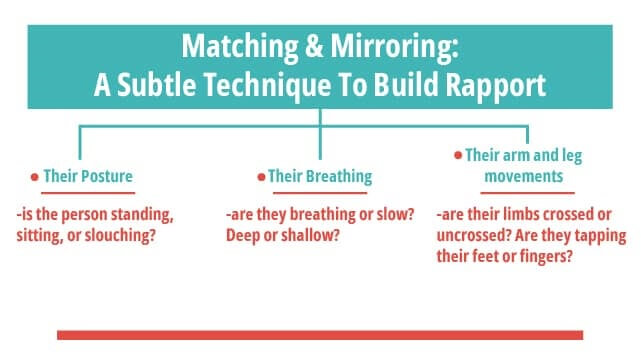Have you ever tried to help someone see a problem in a different light?
Maybe you told them a story or used a metaphor or analogy.
That’s similar to the way in which conversational hypnosis works.
As you can probably imagine, conversational hypnosis is a technique that can be used while you’re having a conversation with someone.
It also relies on the way you speak and the way you move as a sort of complete package, with the aim of helping another person resolve an issue in their life.
And where enhancing relationships with conversational hypnosis is concerned, it’s the same deal.
The idea is to help them discover the way forward and remove any obstacles preventing them from making progress.
You do that through conversation, making suggestions that find their way into their unconscious mind.
That makes it a superb tool for empowering communication.
Of course, your suggestions should always be in the person’s best interests.
The secret is that, because it’s conversational hypnosis, taking place as part of a seemingly normal conversation, the other person isn’t aware of what you’re doing.
And that’s another reason why you should practice the technique ethically, because it is covert.
But despite that, you’re not doing it for any other reason than to help the subject find ways to improve their relationships and be able to communicate more effectively.
So what is it about conversational hypnosis that makes it able to empower communication and strengthen relationships in this way?
Understanding Conversational Hypnosis: A Concise Definition
Conversational hypnosis refers to giving a person’s unconscious mind subtle directions to take a particular action while having a conversation with them.
Everything you think, the words you use, your tonality and your body language should all be working together in perfect harmony.
And although it’s a subtle and covert technique that the other person isn’t aware of, it should always be used as a force for good and not for personal gain of any kind.
But just what exactly does conversational hypnosis entail?
Principles & Techniques Involved In Conversational Hypnosis
To say that conversational hypnosis merely involves having a conversation is oversimplifying things a little.
Like all hypnosis, it’s a type of communication between two people, one of which is a qualified and professional hypnotherapist. That means they’re working on the subject’s behalf in an ethical and responsible manner, concerned only with helping that person resolve their relationship problems.
To do that, they have access to a number of conversational hypnosis techniques, several of which have been summarized below:
Hypnotic Blitz
The word “blitz” refers to a sort of bombardment of words that you fire at the other person. These are specific words related to a certain hypnotic theme, which in this case will be concerning healthy relationships and fruitful communication. The idea is to bring the person’s attention back over and over again to the main issue. An easy way to begin is to simply ask them what they want to achieve.
Revivification
This means to bring a memory back to life. In this case you want the other person to re-experience a time when their relationship was strong and when communication was excellent. The idea is to get them to relive the memory with all the emotions they felt at the time, which helps them reconnect with resources from the past. One way to achieve this is by using the technique of echoing.
Dynamic Mental Imagery (DMI)
As the word “imagery” implies, this technique helps the other person find a symbol that can be useful in allowing them to make the necessary change. It involves taking them on a hypnotic journey to locate symbols that will help them improve their communication skills.
Reintegration
This involves taking two parts and reintegrating them using symbols so they become one again. For example, a problem and an outcome, where you assign a symbol to each part. The easiest way to achieve this is through the use of metaphors.
Mind Bending Language
This is a technique that uses symbolic language to stimulate the imagination and refocus someone’s thoughts and beliefs. The idea is to move their attention away from the problem and toward a solution, usually in places where they would never have looked for them.
In order to use any of these techniques there has to be a certain amount of trust and rapport between the hypnotherapist and the subject. But how do you go about establishing those?
Building Rapport & Trust Using Conversational Hypnosis
The easiest way to build rapport and trust is to begin by telling stories.
The secret is that you need to make a connection, so the other person knows you’re just like them.
You’ve got things you like to do, and things you don’t. You might have a family and a pet. You’ll probably have a favorite hobby or pastime.
You’re not just a hypnotherapist but a real person with likes, dislikes, desires, aspirations, hopes and dreams.
So you might share something about yourself and your personal life. Maybe a special moment relating to your other half, or to your children, or to some other memorable event or special occasion.
This helps them relate to you, to see you as a human being, someone with the same problems and potential as themselves. And when that happens, you’ve connected with them, which means they will relax and begin to trust you.
Once they feel they can trust you, that’s the first hurdle out of the way, but you still need to build rapport. Here’s one possible technique you can use to do that.
Matching & Mirroring: A Subtle Technique To Build Rapport
This technique involves matching and mirroring what the other person is doing.
For example, if they cross their arms, you cross your arms. If they cross their legs or stretch them out, you cross yours or stretch them out.
It has to be subtle in order for it to work. If the other person catches on to what you’re doing, then it will fail.
They might even think you’re mimicking them or making fun of their behavior.
That will make them switch off and immediately reject any further ideas.
The basic concept is to match or mirror whatever they are saying or doing, including things like:
- Their posture – is the person standing, sitting, or slouching?
- Their breathing – are they breathing or slow? Deep or shallow?
- Their arm and leg movements – are their limbs crossed or uncrossed? Are they tapping their feet or fingers?
You need to be undetectable for the technique to be a success. One way to achieve this is by using a method called pacing and leading.
Pacing involves matching and mirroring their words and behavior, while leading involves changing something.
To lead, if they cross their arms, you might cross your legs. If they lean into the desk, you might sit back in your chair.
You “pace” the other person by matching and mirroring them, and “lead” by changing something.
So if they cross their arms, you cross your legs. If they follow you and cross their legs too, then you know you’ve got rapport.
Having established trust and rapport, you’re now ready to help the person improve their communication skills within relationships. And one way to do that is by making use of hypnotic language and framing.
Improving Communication Using Hypnotic Language & Framing Techniques
Framing involves putting a problem or issue into a different context so the other person can see it from a new perspective. Frame control lets you lead someone in any direction you choose in order to highlight the problem and arrive at workable solutions.
There are typically three types of frames you might use, namely:
Preframe
This is where you set the scene before an event to help the other person zoom in on the issue more precisely. In this case, you might ask what the problem is in communicating with their partner. They could say something like this:
“My partner doesn’t listen to me and I constantly have to remind them about things I’ve said over and over again.”
Reframe
This is where you change the person’s perception of an event or circumstance. It may be that a limiting belief has formed, so that they associate getting the other person’s attention with repeating demands or instructions over and over.
Deframe
This is where you make the other person’s objection irrelevant. Instead of doing the repetition thing, they should perhaps reverse the problem and try to listen to the other person more.
The concept here is simple: if you keep doing the same things, you’re going to keep getting the same results.
Another useful technique you might use is reintegration (see definition above) as part of conversational hypnosis. For the first part, you might ask them how they feel when they’re able to communicate easily and fluently. Perhaps they remind themselves of someone they respect and admire, a famous speaker or Hollywood actor. And then ask them how they resemble those people, their charm, their stage presence, etc.
For the second part, ask them what it feels like when things aren’t working so well. Perhaps they feel nervous and unsure of themselves, like Clark Kent. Then remind them that when Clark Kent takes off his glasses he becomes Superman, able to grab people’s attention and make them listen.
>> If you’re interested in hypnotherapy or want to improve your practice, check out our live and online hypnosis training events.
Want to know more about hypnotherapy, but not sure what certification program is the right choice for you? Book a DISCOVERY CALL today to learn more about Hypnosis Training Academy’s hypnotherapy programs.
Challenges Of Problem Solving & Conflict Resolution In Relationships
No relationship is perfect, and there will generally be some sort of conflict arising from time to time. That’s normal and to be expected, but what’s just as important is making sure the conflict gets resolved to everyone’s satisfaction.
To do that, there’s another conversational hypnosis technique that’s ideal for the job. It’s the PCAT Formula, a four-part hypnosis technique tailor-made for solving problems, which is summarized below.
The PCAT Formula
P – for problem
The first step is to talk about the problem and bring it out into the open. You can’t solve a problem unless you know exactly what it is. As soon as you name it and start discussing it, your brain begins looking for ways to solve it.
C – for bypassing the critical factor
Hypnosis works by bypassing the conscious mind and communicating with the unconscious mind. That stimulates the imagination, making it possible for you to find new ways of looking at the problem and its possible solutions.
A – for accessing internal resources
Anything you’ve ever seen, done, heard or thought about is stored in your unconscious mind and is a resource you can tap into. Accessing those resources can be done in a number of ways, such as through reframing, revivification, telling stories or visualizing past successes. Then you can apply those resources in the present.
T – for transforming and testing
Your own internal resources will help you make the change or transformation you want to make. Whatever action you take will let you test how well you managed to put those resources to work.
The PCAT Formula is especially useful for those times when you find yourself stuck in a rut and can’t see a way to move forward, because it offers you a bunch of different options to choose from.
Find out more about the power of the PCAT Formula by reading this comprehensive article:
>>Using The PCAT Formula And Symbolic Language In Finding Answers To Deep-Seated Problems
Using Conversational Hypnosis To Enhance Intimacy & Deepen Connections
One of the simplest ways to help people strengthen the bond between them is by asking questions. The reason that questions are so effective is because they force you to search inside yourself and come up with answers.
Where intimacy in a relationship is concerned, you might ask questions like this:
- What’s your connection with the other person like now?
- What would you like it to be?
- What things are you good at?
- What things do you need to get better at?
- What’s preventing you from improving?
- What things have you tried already?
The answers to these questions will help them discover what things are going wrong, what they really want out of the relationship, and what things they might be able to work on to bring that end result.
This should be enough to get them excited and inspired, knowing that there are steps they can take to make their relationship stronger and healthier.
Conclusion
Conversational hypnosis offers a host of techniques for helping to empower communication in any relationship.
It taps deep into the unconscious mind making suggestions that pave the way for change.
The techniques should only ever be used with the highest ethical considerations to help people solve problems and overcome obstacles.
Some of these techniques include the hypnotic blitz, reintegration, revivification and mind-bending language.
In order for conversational hypnosis to be effective, you need to establish trust and rapport with the other person. One superb way to build rapport involves the technique known as matching and mirroring.
Another option is the framing technique, a way of putting problems into a different context so they can be seen from a new perspective.
There’s also the PCAT Formula, the ideal technique for solving problems and for finding solutions that have eluded you so far.
Finally, asking simple but direct questions can provide clues about what’s going wrong and about what needs to be done to repair it.
If you’re having problems with communication in your relationship, conversational hypnosis is a powerful tool that can help you overcome any difficulties and find a way to move forward.
>> If you’re interested in hypnotherapy or want to improve your practice, check out our live and online hypnosis training events.
Want to know more about hypnotherapy, but not sure what certification program is the right choice for you? Book a DISCOVERY CALL today to learn more about Hypnosis Training Academy’s hypnotherapy programs.
The post Empowering Communication: Enhancing Relationships With Conversational Hypnosis appeared first on Hypnosis Training Academy.
Source: Hypnosis Training Academy




Leave A Comment
You must be logged in to post a comment.